Iran part 2, Abyaneh- Yazd
Wednesday, August 3, 2011
- Silkroad
From Kashan we went to Abyaneh. In the morning, the weather is usually still relatively pleasant. About 40 kilometers out of town, the military police stopped me. They checked the passport and my camera and then escorted me through their half of the desert on their pickup. At the turnoff to Abyaneh I was allowed to cycle alone again. It went into a beautiful mountain valley.

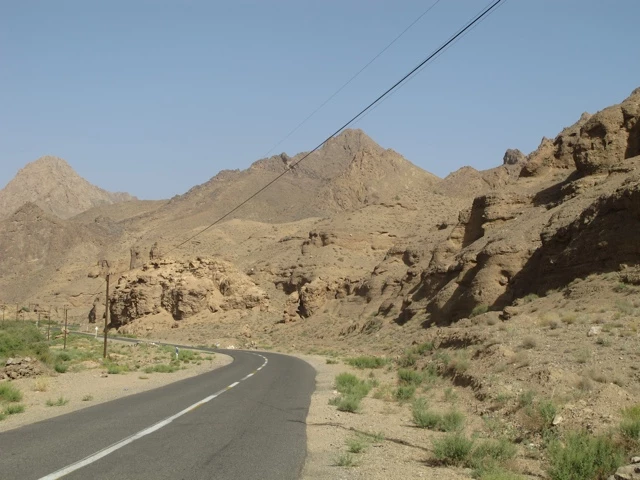
Although the road led up the mountain constantly, the climate here was a lot more pleasant. Shortly before the village, a family invited me to a picnic. They could not speak English and I could not speak Farsi. So we talked for 3 hours on Body Languge. This has become my favorite language. With hands and feet you can communicate everywhere.
Abyaneh is at 2235 meters above sea level. and is a small mountain village with red mud houses.
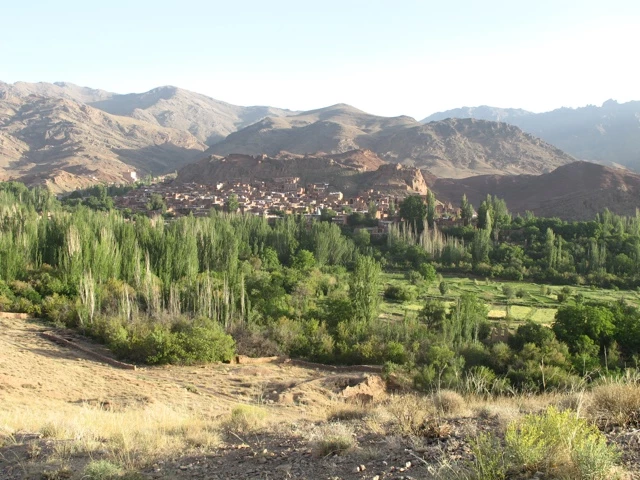

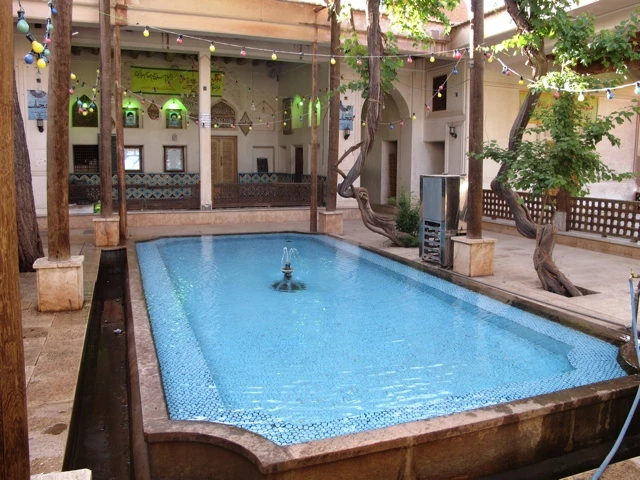
In the village square I met a few people. We played volleyball until late at night. One of them grew up in Hamburg and speaks German very well. He invited me for dinner. I stayed overnight at the tourist information office. He showed me the next morning a holy shrine and one of the three castle ruins outside the village. When I wanted to drive towards Natanz, Michael came to meet me on his motorcycle. He started in Germany six weeks ago and heads for Pakistan, India and on to Singapore. We made an appointment in Esfahan to spend a few days together. Up to Natanz the road was again really steep and with 38 degrees also hot. I met Mohammad before the beautiful Jameh Mosque.

That same evening was the lunar eclipse that we enjoyed with a glass of Arrak (peach schnapps).

Here, on the edge of the desert, this spectacle of the light is beautiful to look at.
The next morning, after four hours of sleep, I drove on to Esfahan. It went up the mountain over 70 kilometers and then over 80 kilometers through an area without shade. When I finally found Michael and the hotel that evening, I was physically exhausted. Only the next day I made the first sightseeing. In 1587, Shah Abbas declared the Great Esfahan as the capital of his country. Previously, the Sassanids, Seljuks and Mongols had built architectural wonders here. The Shah built Imam Square, famous all the way to Europe, with Imam Moshe,

the Ali Qapu palace
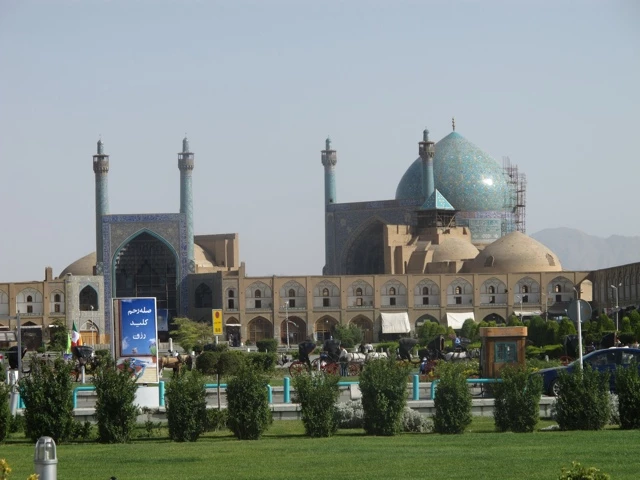
and the Sheikh Lotfollah mosque.

After Abbas's death, the dynasty was over and the capital was moved first to Shiraz and later to Tehran. Opposite our hotel a breakdance contest took place. A great event in one of the Islamist countries of the world. I spent almost half a day there. Today, Esfahan is a UNESCO World Cultural Heritage and with two million inhabitants one of the largest cities in Iran. Pretty nice in the evening are the old bridges on the Zayandeh river. This year, the river will not be watering for the first time. Normally, the river is only 150 kilometers further east in Na'in. UNESCO has great reservations, especially because of the old bridges. The lack of water threatens to collapse the foundations of the 600-year-old bridges. In the evening the bridges are illuminated. Especially the Khaju bridge is very impressive (110m long).
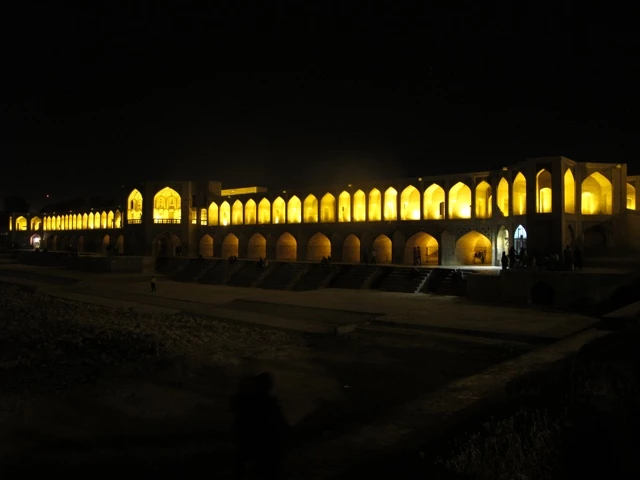
There are six of them altogether. They all emerged in the 15th and 16th centuries under Shah Abbas the First and Shah Abbas the Second. On the second day, I also visited the Chehel Sotun Palace with Michael.
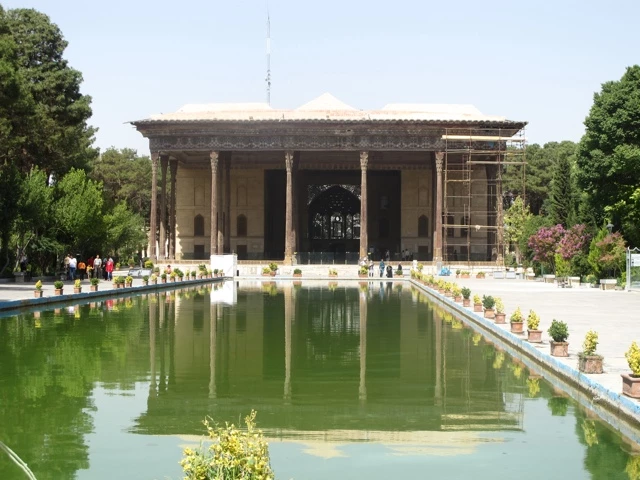

Especially the pictures were very impressive. They show the battle of Shah Ismail against the Uzbeks or how Shah Abbas welcomes the Second King Nader Khan of Turkmenistan. At lunchtime almost all shops are mostly closed and open only at 18 o'clock in the evening. Then it's nice to go for a walk in the bazaar.
The hotel also had two Italian Töfffahrer arrived. Andros and Federico will travel from Milan through Iran, Central Asia, Russia and on to the Mongolian capital Ulaanbaatar in three months.
On Sunday morning I had to say goodbye to the three of them. Maybe you meet again on the way. But I had a reunion with Jalil and his family in the evening. In Divanderreh we had met in the park. He works as a professor at the Technical University of Esfahan and invited me to stay with him for two days. Together we looked at the fire temple Ateshkadeh-Ye.
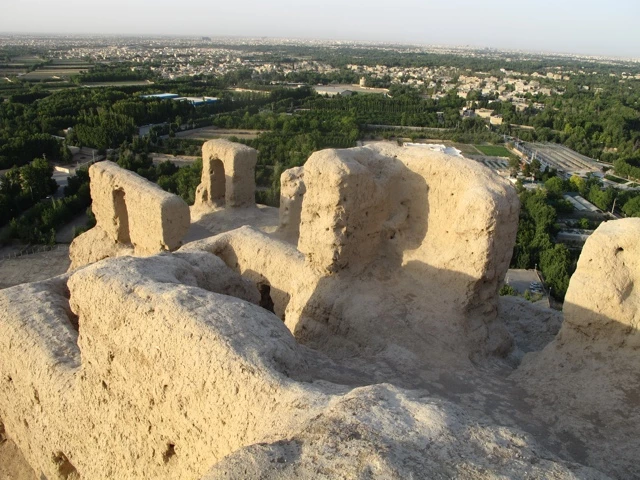
In the 14th century the Manar Jomban Moshe was built under Abu Abdullah. It is also called "the shaken minarets". There are several theories why both towers start to wobble at the same time as you move one of them. Presumably, this is due to the design. Both towers are framed with wooden frames and there are small bells so you can see the phenomenon from the naked eye. The fire temple was built by the Zorias. I could already admire such in Abyaneh. Inside the tower a fire had to burn permanently. The towers were mostly built on high ground so you could see them from afar.
In addition, Jalil bought me two Kuhsehs. Marco Polo used these clay vessels in his day to cool water. A great gift! His niece Helia sewed a few beautiful yurt stockings.
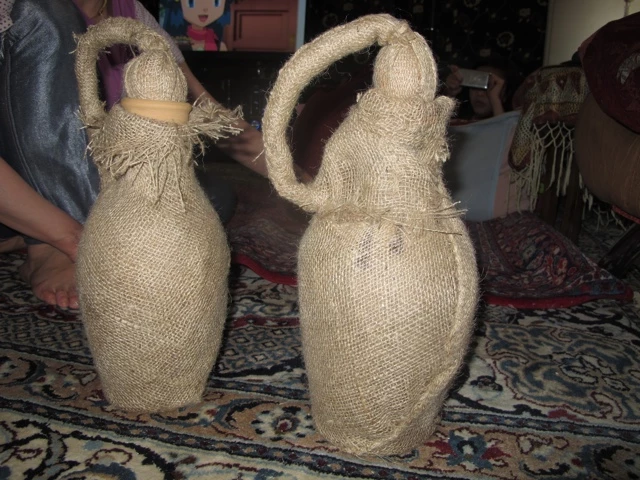
In the evening we went to the city again. Mehrsan and Helia persuaded me to travel to Tehran for four days. I still had too much time anyway. It is a bit strange to spend 5 hours in the car after such a long time. The ride went through the desert, without air conditioning.
In the evening we met 3 other friends of Mehrsan. Two of them live in San Francisco and one in Toronto. First it went to the north of this huge metropolis. The first historical records of the city date back to the 13th century. Yaqoot Hamavi wrote in his book "Mo'jamol Boldan" that the city is inhabited by rebels who spend their lives in an underground urban city. They did everything to humiliate their government. The underground city was made up of 12 quarters, but they were not connected. The Mongols finally destroyed this city as they moved through the Persian Empire on their campaign. In the mid-16th century, King Thamasb the First planted many trees, planted numerous rivers and built several lush gardens. To protect Tehran, he built a wall around the city with 117 towers.
In 1758, Karim Khan Zand and his army moved in and constructed a royal residence in the middle of the city. But when his general Mohammed Hasan Khan was killed and his son Agha Mohammed Khan succeeded him, Karim Khan decided to relocate his business back to Shiraz. He left the royal palace unfinished. After his death, Agha Mohammed Khan relocated the seat of government back to Tehran. In 1900 the population was 250,000 and in the 20th century it was one of the most populous cities in the world. Since then, it experienced two revolutions (1953 and 1979), was redesigned during World War II (Hitler had good relations with the king) and is today, with 10 million inhabitants one of the largest cities on our planet. 10% of the Iranian population live here.
In a Persian restaurant we drank cay and smoked qalyan (water pipe). These are actually built exactly the same as the Turkish Sishas. Only the connectors are different. The Iranian are made of wood and the Turkish metal. Then we drove back to the center, where we went to a real vegetarian restaurant. The only one on my whole Iran trip. As a vegetarian, you do not have it easy in this country. All dishes are prepared with meat. BBQ and kebab are the foundation in the nutritional pyramid. Luckily they have a big variety of fruits.
The traffic in the whole country is hair-raising, but here in the city it really gets down to business. It makes it seem that only one traffic rule is valid here: the faster one wins! Very bad are the Töfffahrer. They are quite ruthless and ignore all signals. Jalil explained that you pay a high blood money. It does not matter who is to blame. Trucks are allowed to drive the cities only with special permission.
For the rest of the evening we spent drinking Arrak. With every glass, the conversation became funnier. The headache came then the next morning. A hangover in Iran. Incredible!
On the second day we took a day trip to a remote gorge. The special experience is that you have to walk through a 2 km long mountain stream. The Iranians are tough guys and do it without neoprene shoes. For me it was a great cool. For the Warmduscher there is an alternative variant: On horses you can ride over the water. We took the hard core option.

For the first time I had frozen at BBQ in Iran. Wonderful! On the return trip we drove then still in a thunderstorm. For the first time in three weeks, I enjoyed raindrops. During our stay in Tehran we watched a lot of DVD's. In Iran, there is no copyright and so you can bid for all current films at very reasonable prices.
One day later, Mehrsan and I were back in Esfahan. At five o'clock in the morning I drove on. Jalil accompanied me a bit by car. It was a great time that I was allowed to spend in this family.
After a break of 9 days, it was not easy to get going in the beginning. Here in the desert, the thermometer rises to 45 degrees at 10:00. An hour later it was already 51 degrees and simply impossible to continue. I took a short lunch break under a tree. Even while sleeping in the shade you sweat. At 17:00 I wanted to go wide. I had not driven 500m when Mohammad and his brother Reza stopped me. They have built a small homestay for bikers and motorcyclists here in Toudeshk and have been running this for 8 years. A Dutchwoman was also there. From her I learned that the day before a Belgian couple had stayed here, which is also heading Yazd. After a good night's sleep with a delicious dinner and breakfast (Mohammad got up at 5am to cook me breakfast), we left at 6:30.
Until Na'in it was still relatively pleasant as the road led through the mountains. After that came the desert. In Aqda, I had to surrender to the heat. Next to a park I bought water again in a shop. I currently use 9 liters of water per day. There are only a few supermarkets in Iran. It takes a little practice at the beginning until you, as a European, used to live in these small shops. Ali, the seller showed me the thermometer. In the shade, the temperature was 47 degrees. He did not want to put the thing to the sun, because he was afraid that it might burst. The ad ends at 50 degrees.
I could not close my eyes during the night. The temperature did not fall below 40 degrees and in the tent it felt like in a sauna. Exhausted, I put the remaining 140km back to Yazd the following day. At about 11 o'clock I arrived at the Silk Road Hotel. There I met the Belgian couple and four other tour riders.

Karin and Stefan drove in April from Switzerland to Istanbul and have set their bicycles there. You are now traveling by bus through Iran and Central Asia. At the end of the year, it will then be back to home from Istanbul by bike.
I also had a reunion with Sabine. She drove past me in Capadocia. We have not met again since then. It also started in Switzerland at the beginning of April and also travels on the Silk Road to China. In Iran she met Jeremie from Canada. He drives from Canada to China. We spent the whole afternoon in exchange. After three months traveling, there is much to report. Tim and Tine convinced me that in this heat, it makes little sense to drive alone through two deserts. We decided to take the bus first to Tabas and then continue to Mashhad. We all spent the evening together at a picnic in the park. The next day I visited with Jeremie and Tim the fire temple Ateshkadeh. Ali accompanied us. We met him in the park the night before.
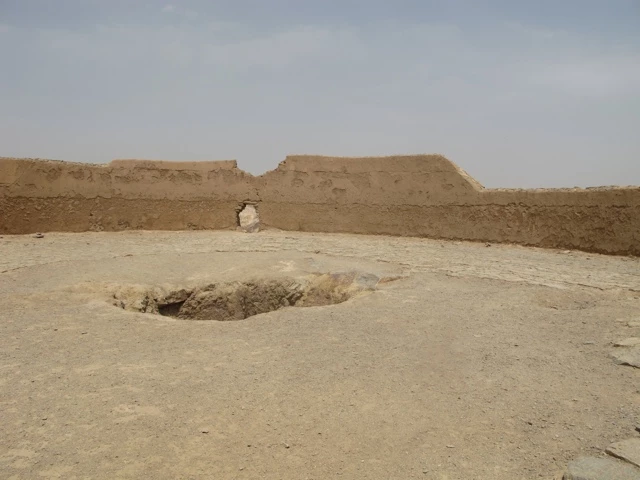
Zoroastrians from around the world come here to visit this temple, which has been around since 470 AD. permanently burning. In 1174 the fire was relocated to Ardakan, back to Yazd in 1474 and finally to its current location in 1940. Until the Arab revolt, the Zoroastrians were the largest religion on the Iranian plateau. The Zoroastrians believed in two principles: the "Vohu Mano" (good conscience) and "Ahem Nano" (bad conscience). These were responsible for day and night, life and death.
Ahura Mazda was her god. This was not embodied by any symbols or figures. He only demanded that one pray to him in the direction of the light. At that time (1000-1500 BC), fire was the only light they could control. Therefore, they built fire temples in which the light always had to burn. Today there are still about 150,000 followers of this religion. 5000 live in Yazd. The religion is also known by the name "Mazdaism", derived from the name of its god, Ahura Mazda. The three white men who visited the newborn Christ from biblical history were probably also Zoroastrian priests.
In the afternoon Tim, Tine and I visited the Water Museum. Water is very important here in the desert. The inhabitants had created sophisticated, underground water channels. These were able to direct the groundwater from the mountains directly into huge reservoirs. As air conditioning, they built towers that could catch the wind from all directions and carry it down with circulation.
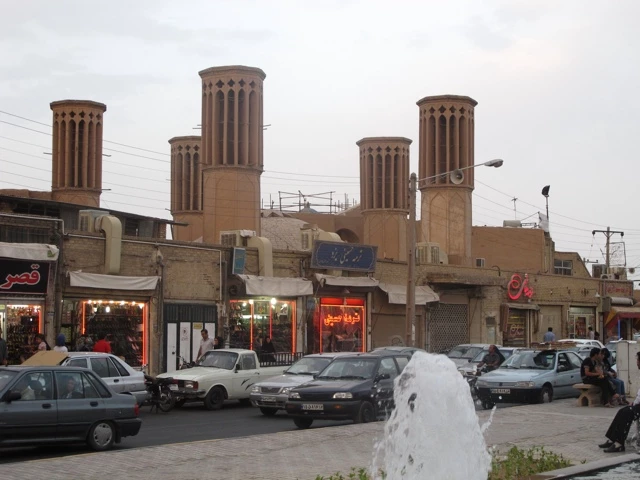
Yazd was also my southernmost point on the Iranian journey. Now it's on to the north.